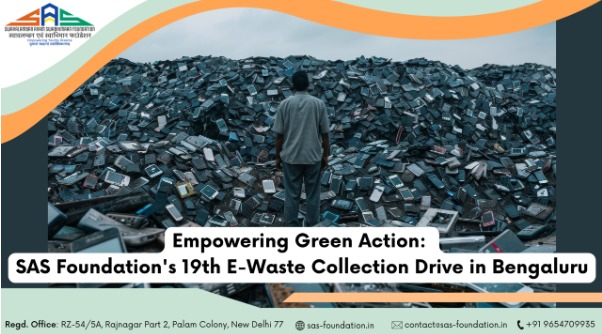Here’s a suitable heading and an expanded 1000-word article based on your provided content:
From Birth to Bin: The Lifecycle of Electronics and the Path to a Sustainable Future
In today’s fast-paced digital age, electronic devices are indispensable. From smartphones and laptops to smart home devices and wearables, our lives are intertwined with technology. But have you ever stopped to consider the full journey of your devices—from the moment they are conceived to their final resting place as e-waste?
Understanding the lifecycle of electronics is essential—not just for consumers but for manufacturers, policymakers, and environmentalists alike. This knowledge allows us to identify critical stages where intervention can reduce environmental damage and promote sustainable practices.
1. Extraction and Manufacturing: The Origins of Our Devices
Every electronic device begins with the extraction of raw materials—metals like gold, copper, lithium, cobalt, and rare earth elements. These materials are mined from the earth, often under environmentally and ethically questionable conditions.
🔍 Environmental and Societal Costs:
- Deforestation and ecosystem destruction occur when forests are cleared for mining operations.
- Toxic runoff contaminates local water bodies, harming wildlife and communities.
- Human rights violations, including child labor, are prevalent in regions where artisanal mining supports global tech supply chains.
Once raw materials are procured, they are transported across continents for manufacturing. This process consumes enormous amounts of energy and water, and contributes significantly to carbon emissions. Additionally, the manufacture of printed circuit boards, batteries, and microchips involves hazardous chemicals, producing industrial waste that is rarely discussed.
2. Usage: The Hidden Carbon Footprint of Everyday Use
While we often associate sustainability with disposal, the usage phase of electronics has its own footprint. Charging your laptop, keeping your Wi-Fi router on 24/7, or binge-watching shows on a smart TV all contribute to energy consumption.
⚡ Key Impacts During Usage:
- Electricity demand increases, especially in countries reliant on fossil fuels.
- Battery degradation over time results in shorter device lifespans, encouraging early replacement.
- Software updates often slow down devices, nudging consumers to upgrade prematurely.
Even though individual usage may seem negligible, the collective impact of millions of devices running daily is monumental.
3. Disposal and E-Waste: The Ticking Environmental Bomb
According to the Global E-waste Monitor 2020, the world generated 53.6 million metric tonnes of e-waste in 2019. Less than 20% was formally recycled.
🚯 Problems with Improper Disposal:
- Devices thrown in landfills leach toxic substances like lead, mercury, and cadmium into the soil and water.
- Informal recycling sectors in developing countries use hazardous practices, including open-air burning to extract copper or gold, which release carcinogenic fumes.
- Most consumers are unaware of safe e-waste recycling options, leading to electronic clutter in households or illegal dumping.
4. The Opportunity: Embracing Responsible E-Waste Recycling
E-waste, if handled correctly, can be an opportunity rather than a burden. A well-structured e-waste management system helps recover precious materials and reduce the need for fresh extraction.
🔁 The Role of Recycling:
- Recoverable materials like aluminum, gold, and copper can be reused in manufacturing new devices.
- Reduces pressure on mining operations and conserves non-renewable resources.
- Prevents pollution and health hazards caused by improper disposal.
Organizations like the Swavalamban Avam Swabhimaan Foundation (SAS Foundation), in partnership with certified recyclers like Attero, are playing a pivotal role by conducting awareness campaigns, e-waste collection drives, and promoting sustainable habits across Indian cities.
5. Sustainable Design: The Way Forward
To truly address the electronics crisis, we need a shift in the way devices are designed, used, and recycled.
🛠️ Principles of Sustainable Design:
- Modular design that allows easy repairs and upgrades.
- Use of recycled or biodegradable materials in product manufacturing.
- Designing for longer lifespans and easier disassembly for end-of-life recycling.
Companies can also adopt Extended Producer Responsibility (EPR) models, where manufacturers take back used devices for recycling and offer incentives to consumers.
6. Consumer Awareness: Power in Your Hands
While systemic change is necessary, individual choices also hold power.
💡 What You Can Do:
- Buy electronics only when needed—avoid unnecessary upgrades.
- Support brands that offer eco-friendly designs and take-back programs.
- Use certified e-waste drop-off points or attend local recycling drives organized by trusted NGOs.
- Educate others about the importance of responsible e-waste disposal.
Even donating old gadgets to NGOs that refurbish and redistribute devices can extend their usability and reduce waste.
7. Policy and Innovation: Enablers of a Circular Economy
Governments must step in to ensure regulations support responsible disposal, collection, and recycling. India has taken significant steps by introducing e-waste rules and mandating EPR compliance for electronics producers.
Simultaneously, technological innovations are revolutionizing e-waste management:
- AI-powered sorting systems to segregate components efficiently.
- Robotic dismantling units to safely extract materials.
- Blockchain for transparent tracking of waste from origin to processing.
By investing in this sector, we not only protect the environment but also create green jobs and boost economic growth.
Conclusion: A Shared Responsibility for a Greener Tomorrow
The lifecycle of electronics—from raw material extraction to disposal—is filled with environmental and social challenges. However, it also presents opportunities to innovate, educate, and collaborate. By rethinking our relationship with electronics and embracing sustainability at every stage, we can reduce harm, conserve resources, and build a circular economy that benefits both people and the planet.
At SAS Foundation, we are committed to empowering youth and communities through education, awareness, and action. Let’s all contribute to this movement for a more conscious and sustainable digital future.
🌱 Ready to Learn More?
📩 Subscribe to our newsletter for updates, insights, and stories on sustainable living and green practices.









